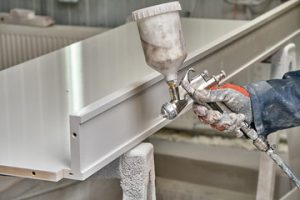The return-to-duty process is more than just a path back to work. It is a profound reset that reshapes how individuals see themselves after a setback. Instead of focusing on punishment, it nurtures responsibility and renewal. This subtle shift creates space for real growth to begin.

At its heart, the process starts with honest acknowledgment. People are encouraged to face the issue that led to their removal from duty without fear of shame. This moment of truth lays the groundwork for personal accountability. It becomes the seed of transformation rather than defeat. Contact DOT SAP Services for professional help.
One unique aspect of the return-to-duty process is how it reframes evaluation as guidance, not judgment. The assessments are designed to uncover deeper causes, not merely to label. This creates a sense of safety that opens people up to change. It helps them see the experience as a turning point instead of an ending.
Another powerful element lies in the emphasis on tailored recovery paths. No two individuals carry the same story or pressure. The process acknowledges this by shaping each step around the person’s strengths and struggles. This personalization fuels engagement and lasting change.
What makes this approach effective is its slow rebuilding of self-trust. Many individuals feel broken or unworthy when they first begin. Each milestone, however small, helps them rebuild belief in their own capacity. Over time, that quiet confidence becomes unshakable.
The return-to-duty process also challenges the idea that productivity defines worth. It invites individuals to focus on restoring balance before chasing performance. This pause allows them to heal mentally and emotionally. Once restored, they return to work stronger than before.
One often overlooked part of this journey is emotional regulation. People learn to navigate stress, fear, and frustration without collapsing under them. This skill protects their progress during high-pressure situations. It also strengthens their relationships with peers and leaders.
The process highlights the power of reflection over reaction. Instead of rushing back into old routines, participants learn to observe patterns. This creates awareness of triggers and unhealthy habits. Such insight becomes a shield against relapse or repeated mistakes.
Another distinct layer is the focus on responsibility without self-condemnation. Individuals are guided to own their actions without drowning in guilt. This healthy acceptance accelerates their reintegration. It also helps them carry lessons forward rather than emotional scars.
An innovative part of the return-to-duty path is how it reframes discipline as self-care. Instead of seeing discipline as external punishment, they see it as personal protection. This mindset turns structure into a source of strength. It makes consistency feel empowering rather than restrictive.
The process nurtures a supportive environment where vulnerability is seen as courage. Participants are encouraged to share their fears and hopes with mentors or peers. This dismantles the isolation that often accompanies setbacks. It replaces shame with shared humanity.
One striking outcome is the emergence of resilience that feels natural. People stop forcing themselves to be tough and start becoming steady. This resilience grows from acceptance and clarity, not pressure. It becomes an invisible strength that endures challenges ahead.
The return-to-duty process also cultivates an ability to see opportunity in limits. When resources or time are tight, participants are pushed to adapt. This sharpens creativity and resourcefulness. It proves that growth can thrive even within constraints.
A surprising part of this journey is the shift in how people measure success. Instead of seeing success as instant results, they start seeing it as continuous alignment with values. This creates sustainable motivation that outlasts fleeting rewards. It makes each day feel like meaningful progress.
Another core transformation lies in rebuilding healthy routines. People learn to weave stability into their days through small rituals. These simple anchors guard against burnout and chaos. They also create a sense of control during uncertain times.
The return-to-duty process teaches how to separate identity from past actions. Many begin believing their mistakes define them. This journey proves they are capable of growth beyond their history. That realization becomes a powerful engine for lasting change.
A valuable dimension of the process is strategic patience. Participants are taught to trust gradual improvement rather than chase quick fixes. This reduces frustration and burnout. It also ensures progress remains stable and not fragile.
The experience often reveals hidden strengths. People discover qualities like persistence, empathy, or clarity under pressure. These traits may have been buried beneath stress or fear. Bringing them forward makes their return not just possible but transformative.
The process builds habits of continuous self-assessment. Instead of waiting for problems to explode, they regularly check in with themselves. This prevents old patterns from quietly returning. It also fosters a mindset of proactive growth.
An unexpected benefit is how it rewires relationships. As people rebuild themselves, they often repair trust with others. They become more transparent, empathetic, and reliable. This restores harmony not just at work but in personal life as well.
The return-to-duty process also shifts one’s relationship with failure. Failure becomes data, not doom. This makes them more willing to try new approaches without fear. It keeps progress alive even in unpredictable situations.
Another subtle yet powerful aspect is the integration of personal meaning. Participants are urged to align their comeback with deeper values and long-term vision. This creates a sense of purpose beyond just getting their role back. It transforms their return into a mission, not a mere obligation.
This journey ultimately changes how individuals view their own potential. They stop seeing limits as permanent walls. Instead, they view them as puzzles waiting to be solved. This mindset keeps them evolving long after their official return.
One of the deepest outcomes is self-forgiveness. The process gently guides people to release the weight of regret. This creates mental space for fresh energy and hope. It is often the moment their confidence truly returns.
Another key evolution is emotional maturity. They learn to respond with intention rather than impulsivity. This makes them more stable under stress. It also increases their credibility and influence among peers.
The return-to-duty process encourages curiosity about growth. Instead of fearing change, participants begin to seek it. They see each challenge as an experiment that can sharpen them. This curiosity fuels continuous development far beyond the program.
Ultimately, this process reframes recovery as reinvention. It does not aim to restore people to who they were before. It helps them become someone stronger, wiser, and more aligned. This is why their return often marks the start of their best chapter, not the end of a troubled one.


